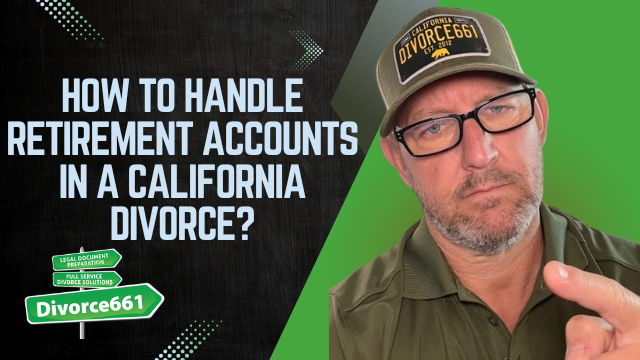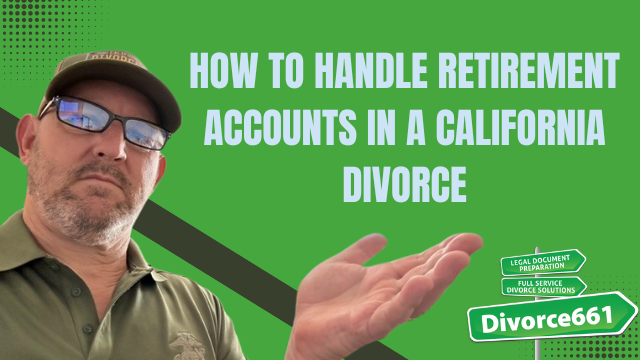How to Handle Retirement Accounts in a California Divorce?
Why retirement accounts matter in a California divorce
Retirement accounts are often among the most valuable marital assets. In California, funds earned during the marriage are generally community property and are typically split equally between spouses. That makes dividing 401(k)s, pensions, and IRAs a critical part of any divorce settlement.
Division is not as simple as writing it into the judgment
Even when both spouses agree on a split, many retirement plans will not process a division based only on the divorce judgment. Most employer-sponsored plans require a special court order to legally divide benefits and to avoid tax consequences.
Most retirement accounts require a special court order called a QDRO, short for qualified domestic relations order, to divide the funds legally and without tax consequences.
What is a QDRO and when is it required?
A QDRO is a Qualified Domestic Relations Order. It is a specific type of court order that instructs a retirement plan to pay benefits to an alternate payee, such as a former spouse. QDROs are required for many employer-sponsored plans, including 401(k)s and pensions. Without a QDRO, plan administrators will not implement the division and attempting to withdraw or transfer funds without the proper order can trigger taxes and early withdrawal penalties.
IRAs are handled differently. Traditional and Roth IRAs generally do not require a QDRO; transfers incident to divorce can be effected by a properly drafted judgment or transfer document. Even so, careful wording and correct processing are still essential to avoid unintended tax results.
How the QDRO process works
- Include the agreed division in your divorce judgment with clear, specific language identifying the accounts and the split.
- Have a QDRO specialist or family law attorney draft the QDRO consistent with both the judgment and the retirement plan’s rules.
- Submit the QDRO to the plan administrator for review and approval.
- Once accepted, the plan processes the division according to the QDRO, transferring benefits or creating a payable right for the alternate payee.
Real client example
We recently worked with a couple who agreed to split a pension and a 401(k). They documented the agreement in their judgment but did not know about the QDRO requirement. We updated their paperwork with the proper language and coordinated with a QDRO attorney. The plan administrators accepted the QDRO and processed the division smoothly, with no penalties or surprises.
Practical steps to protect your retirement assets
- Inventory every retirement account and determine whether the funds are community or separate property.
- Specify the exact percentage or dollar amounts in the divorce judgment and identify the plan, account numbers, and dates used for valuation if appropriate.
- Determine which accounts require a QDRO (typically 401(k)s and pensions) and which do not (typically IRAs).
- Engage a QDRO specialist or attorney to draft and submit the QDRO to the plan administrator.
- Obtain written acceptance from the plan administrator and confirm how distributions or rollovers will be handled.
- Verify tax treatment and confirm that the division will be processed without triggering penalties or immediate tax events.
Common mistakes to avoid
- Relying solely on the divorce judgment without obtaining any plan-level approval or a QDRO when required.
- Failing to identify all retirement accounts or misunderstanding which funds are community property.
- Not using a QDRO professional familiar with the plan document and administrator requirements.
- Missing plan deadlines or failing to follow the administrator’s required format for QDRO submission.
How we help
At Divorce661 we make sure retirement division is done right. We draft the proper judgment language, explain whether a QDRO is required, and if necessary refer you to trusted QDRO professionals who will handle the technical drafting and plan submission. Our goal is to avoid costly mistakes, prevent delays, and make sure your division is accepted by plan administrators and processed penalty-free.
Next steps
If you are going through a divorce and want to make sure your retirement accounts are handled properly, schedule a free consultation at divorce661.com. We will guide you step by step so you can move forward with confidence and peace of mind.


